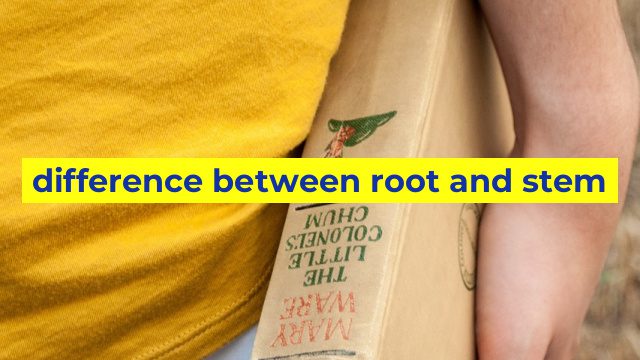The Difference Between Root and Stem
When it comes to botany, understanding the various parts of a plant is crucial. Two of the most important parts to understanding are the root and the stem. While they may seem similar at first glance, there are many differences between the two.
What is a Root?
The root is a vital part of any plant. It is the first part of the plant that emerges from the seed and is responsible for absorbing water and nutrients from the soil. Roots anchor the plant to the ground and provide support as it grows. They can grow deep into the ground, making it possible for plants to survive in difficult conditions.
What is a Stem?
The stem is the part of the plant that supports the leaves, flowers, and fruit. It provides a pathway for water, nutrients, and sugars to travel throughout the plant. Stems can grow both above and below ground, and they play a critical role in photosynthesis.
The Differences Between Root and Stem
While both roots and stems serve important functions in plants, there are several notable differences between the two.
Firstly, their structures are different. Roots have no leaves or buds, while stems do. Roots have a root cap that protects the growing tip, while stems don’t. Roots also have root hairs which help with the absorption of water and nutrients, while stems don’t have root hairs.
Secondly, their roles are different. The root’s primary function is to anchor the plant in the soil and absorb water and nutrients. On the other hand, the stem’s primary function is to transport food and water throughout the plant and support the leaves and flowers.
Thirdly, their location is different. Roots grow underground and often grow deep into the soil. Stems grow above ground and are typically visible to the naked eye.
In conclusion, while roots and stems may seem similar, they serve different functions and have different structures. Understanding the differences between the two can help in better plant care and management.
Table difference between root and stem
| Root | Stem |
|---|---|
| Part of the plant that anchors it in the soil and absorbs water and nutrients | Part of the plant that supports branches, leaves, flowers and transports water and nutrients from roots to other parts of the plant. |
| Does not have leaves or nodes. | Has leaves and nodes. |
| Can be fibrous or taproot. | Can be woody or herbaceous. |
| Stores food in some plants. | Does not store food. |
| Can regenerate if cut or damaged. | Can regenerate if cut or damaged, but to a lesser extent than roots. |

